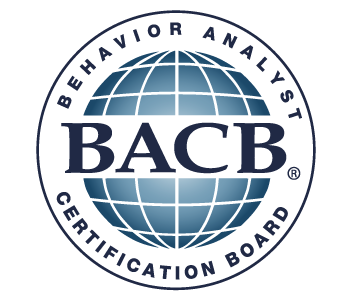What is ABA
“ABA is the only therapy or treatment endorsed by the United States Surgeon General (2000) and is considered by many to be the standard approach for individuals with autism” (Wolfe & Neisworth, 2005).
Applied Behavior Analysis is defined as the use of knowledge gained for improvement of behaviors that are socially important (Baer, Wolf, & Risley, 1968) and is based upon more than 50 years of scientific investigation with individuals affected by a wide range of behavioral and developmental disorders (Leaf & McEachin, 1999). Behavior analysis looks at the interaction between antecedents and consequences to plan the skills that will be targeted and make changes to the programming (Alberto & Troutman, 2006). Manipulating environmental conditions and implementing behavior principles such as reinforcement build the foundation for behavior change and programs (Simpson, 2001).
Analyzing data on a regular basis allows the client's team to ensure interventions are having the desired effects and make changes to the program as necessary (Steege et al., 2007). This will include looking at target responses and analyzing the effects of manipulating antecedents and consequences. Two components are incorporated into programming to ensure success. The first is assessment of behavior in the educational context and the second is intervention based upon the assessment to improve academic, vocational, life-skills, and social behavior (Steege et al., 2007).
Behavior analysis uses a wide range of strategies that include precision teaching, shaping, generalization, chaining, discrete trial teaching (DTT), modeling, and maintenance (Dillenburger et al., 2004). These methods are used to support persons with developmental disabilities in at least 5 ways: “a) to teach new skills, b) to reinforce and maintain previously acquired skills, c) to generalize behavior from one situation to another, d) to restrict or narrow conditions under which interfering behaviors occur, and e) to reduce interfering behaviors by discontinuing their reinforcement and reinforcing competing replacement behaviors” (Steege et al., 2007).
Article References
Alberto, P. A., & Troutman, A. C. (2006). Applied Behavior Analysis for Teachers (7th ed). NJ: Pearson Education.
Baer, D.M., Wolf, M.M. & Risley, T.R. (1968). Some current dimensions of applied behavior analysis. Journal of Applied Behavior Analysis, 1, 91-97.
Leaf, R. & McEachin, J. (1999). A Work in Progress. New York: DRL Books.
Simpson, R.L. (2001). ABA and students with autism spectrum disorders: Issues and considerations for effective practice. Focus on Autism and Other Developmental Disabilities, 16(2), 68-71.
Steege, M.W., Mace, F.C., Perry, L., & Longenecker, H. (2007). Applied behavior analysis: Beyond discrete trial teaching, Psychology in the Schools, 44(1), 91-99.
Wolfe, P. & Neisworth, J.T. (2005). Autism and applied behavior analysis. Exceptionality, 13(1), 1-2.

